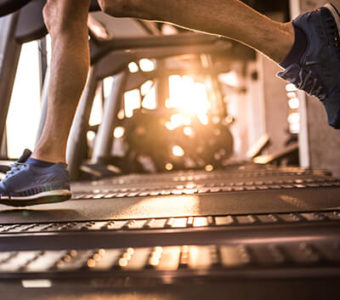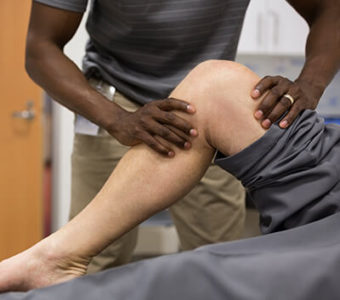Whether you regularly run 50 miles a week or enjoy a daily walk through your neighborhood, the right pair of shoes can prevent injuries and leave you feeling like you’re walking on air. We’ve got tried and true tips from an expert on how to find the perfect pair of trainers to fit your running or walking style.
“The perfect pair of running shoes is such an individual choice,” says Erin Simko, team leader of training and education at Fleet Feet in Columbus, Ohio. “Your opinion is the only one that matters. What works for your friend probably won’t work for you, which is why it’s so important to spend the time to find the right fit for your feet.”
If the shoe fits
Every brand of shoes fits differently, and a wide range of styles and models offer different levels of support and cushioning.
The anatomy of your foot, such as your arch height, also plays a major role in how you run and the type of shoe that will provide the best support. Many running stores, including Fleet Feet, offer a comprehensive analysis of your feet and running gait to help you find the right running shoe. The gait analysis process requires you to run on a treadmill for 30 to 60 seconds while a video is taken and later analyzed frame by frame to determine your how your foot aligns with your ankle while running. Known as pronation, this alignment affects how you run and can help narrow down the type of shoe that fits your unique stride.
Overpronation
By far the most common form of pronation, this means that when your foot hits the ground your ankle rolls inward. People who overpronate typically need a shoe that provides added stabilization.
Under pronation
Also known as supination, people who have this type of pronation roll their ankle outward when running. Runners with this form of pronation typically benefit from shoes that have neutral stabilization or more cushioning at the outsole.
Simko explains that there should be no break-in period needed for running shoes and that they should feel instantly comfortable and supportive, with plenty of room for your toes to spread out. You should not feel any pinching, rubbing or toe cramping. The shoes that feel the most comfortable are almost always the right shoe for your running or walking needs, and it’s completely normal to wear a different size in running shoes than what you wear in other shoes.
“I can’t tell you how many times we’ve measured someone’s foot and discovered that they’ve been buying shoes a size too small for most of their life,” says Simko.
“A shoe that fits properly can make a huge difference in your comfort level when running, walking or working out.”
The extra mile
While most runners go for a great-fitting pair of road shoes, Simko explains that some people might benefit from specialized shoes to help them meet their running, hiking and walking goals.
“If you regularly run or walk on really sloshy, muddy trails, then a pair of trail running shoes can provide you with a better grip and weather protection,” says Simko. “For folks who are training for a marathon or a race, competition shoes can help give you an edge with features including additional support or spikes for extra traction.”
A shoe with a stiffer sole can help people who struggle with plantar fasciitis. In many cases, the right shoes can also ease the pain caused by bunions and Simko says it’s a matter of finding shoes that are wide enough to accommodate the shape of your foot.
While most runners and walkers find the insoles of their shoes offer the right level of support, people looking for an extra boost of cushioning, firmness or support find inserts to be the key to comfort. Simko adds that while your shoes provide side-to-side support for your feet, inserts minimize the up and down movement of your foot inside of a shoe. Most running shoe retailers carry a wide range of options ready to place in your favorite shoes, or you can opt to have inserts custom made to your foot.
“A good pair of shoes is a great place to start, but inserts can accommodate a wide range of needs and preferences,” says Simko. “A new insert can be a great addition if you have a difference in the sizing of your feet or they provide temporary support for something like plantar fasciitis.”
Change is good
On average, running shoes can provide cushioning and support for 300 to 500 miles, which includes time spent walking and everyday wear. It can be difficult to keep track of your mileage if you wear your shoes after your regular walk or run, but most people need a new pair of trainers after somewhere between six months and a year of regular wear.
“Ultimately, it depends on how hard you are on your shoes. You need to watch for worn tread on the bottom or sudden aches and pains,” says Simko. “If you’ve been comfortable in your running shoes for several months and suddenly start having knee or shin pain, it’s probably time for a new pair.”
Additional signs it it’s time to replace your old trainers include bruised or damaged toenails, blisters, corns and pain in your foot, shins, knees or hips. Some research suggests that a fresh pair of running shoes can help prevent overuse injuries, such as shin splints or runner’s knee. Because popular brands of running shoes regularly release new styles and update older models, Simko advises against too much brand loyalty.
“It can be tempting to grab the same shoe model again and again,” she says. “You should keep in mind that your running style can change, shoe technology is constantly evolving and shoes can feel really different after a few months or years.”
Despite the undeniable health benefits, running can cause a lot of wear and tear on your feet and joints. Taking the time to find the right pair of running shoes can ensure you have the right level of shock absorption and foot stability to keep you comfortably pounding the pavement.
“There is a perfect pair of running shoes for every person,” says Simko. “You shouldn’t be miserable because of your shoes, and you shouldn’t settle for something that doesn’t immediately feel comfortable.”
Curious to learn more? A running shoe evaluation is just part of OhioHealth’s Runner’s Clinic along with gait analysis, time with a sports dietitian and much more.





